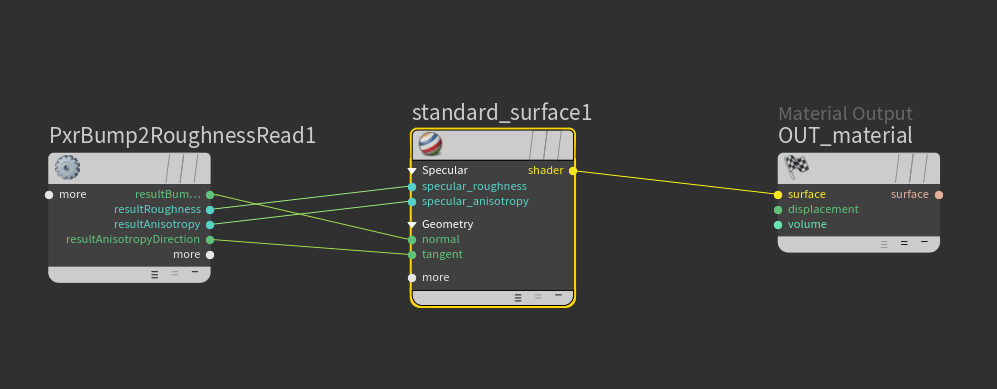https://rmanwiki.pixar.com/display/REN24/PxrBumpRoughness https://graphics.pixar.com/library/BumpRoughness/paper.pdf
Bump to roughness works with texture-based bump maps. First we need to generate a special, 6-channel image of the bump slopes. Life is made easy for us in 2021, since maketx has an option to spit this out:
/home/cactus/Arnold-7.0.0.0-linux/bin/maketx' /home/cactus/b2r/scenes/36_scratches_smudges_fingerprints_specs.tif --bumpslopes
This image becomes the input of the PxrBump2RoughnessRead shader. The pre-computing of this image replaces the PxrBump2RoughnessMake shader.
All that's left now is to plug this image into the shader, and plug the outputs into the correct slots of a standard_surface shader.
/home/cactus/Arnold-7.0.0.0-linux/bin/oslc' src/PxrBump2RoughnessMake.osl -o dist/PxrBump2RoughnessMake.oso
/home/cactus/Arnold-7.0.0.0-linux/bin/oslc' src/PxrBump2RoughnessRead.osl -o dist/PxrBump2RoughnessRead.oso
Copyright 2017 Pixar
Example implementation code for the Pixar tech memo titled "Geometry into Shading". This tech memo is currently available at http://graphics.pixar.com/library/BumpRoughness/paper.pdf.
Licensing information can be found in the license.txt file.
At this time, Pixar has no plans to provide support or receive contributions to the example implementation code.
More information:
- validate if the roughness mapping should completely get removed when viewed at the highest mipmap? Pixar's documentation does mention that there will always be a look difference between this and regular bump mapping.
- generate images showing the main issue it solves
- generate images of the automatic anisotropic mapping
